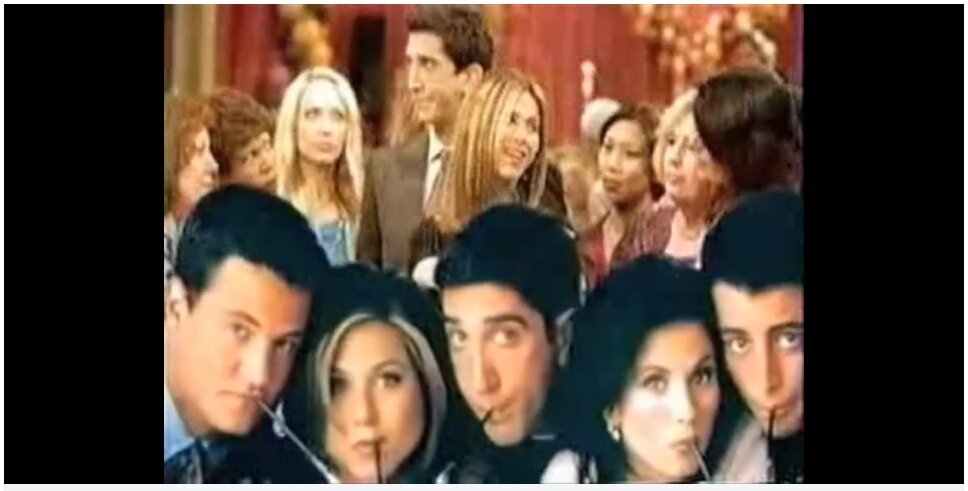 Cinema Journal Teaching Dossier
Vol. 1(2) Spring/Summer 2013
Kelli Marshall
DePaul University
Cinema Journal Teaching Dossier
Vol. 1(2) Spring/Summer 2013
Kelli Marshall
DePaul University
A few months before his death, one of Roger Ebert’s far-flung correspondents, Kevin Lee, compiled for RogerEbert.com a list of video essays he deemed representative of the emerging art form. In his post, Lee informs readers that most of the projects, while seemingly professionally done, are actually produced with “consumer-level equipment,” suggesting that virtually anyone can take on this task. Indeed, the only limits of the video essay, as Lee sees it, are “those of imagination and intelligence.” I agree with Ebert’s “far flunger” here and, for these reasons among others (e.g., video essays are current, fun, and useful), I have chosen to integrate the video essay into my media studies classes. So far, the assignment has succeeded. I chalk this up to two things: Millennials’ willingness to figure out the technology and grading rubrics.
Millennials and Becoming Tech-Savvy
According to Pew Research, Time, MTV Insights, and copious other recent publications and surveys, Millennials—or those born around 1985 through the end of the 1990s—are the most technologically savvy people alive today. They are, after all, the first generation to grow up with all things digital, able to access virtually anything with the touch or swipe of a button: computers, Internet, cable, cell phones, photography, music, video, social media. But even though 75% of them have created a profile on a social networking site, 59% of them consume their news via the Internet, and most of them spend 2 hours of their workday surfing online for non work-related material, this does not necessarily make them “tech savvy.”
In fact, over the last few years, I (a Gen-Xer) have had to teach several of my Millennial students how to sign up for Tumblr, create a Twitter account, set up a WordPress blog, and download videos from YouTube. Needless to say, when I considered requiring my students to create video essays for their primary projects, I was concerned. I didn’t know how much explanation of programs like Handbrake, iMovie, and Windows Movie Maker would be required. After all, at least 75% of them had never ripped a commercial DVD or inserted an .mp4 file into a video-editing program. After three years, this figure is still about the norm.
With that in mind, here’s how I’ve broached the video essay project: I briefly discuss the software, I rip a DVD chapter in class, and I embed links/tutorials on our course website. After that, I do little else, instead forcing the students to decipher the rest of the assignment on their own. And for the most part, they do. In other words, it’s not necessarily a tech-savviness inherent within an entire generation that helps to make this assignment a successful one, but the students’ willingness to spend time figuring out the technology after it has been introduced to them. Like anyone who is hard-pressed to create something by a specified deadline, Millennials can become tech-savvy.
Different Projects, Same Grading System
Given this basis, for the past three years I have required my media studies students to produce video essays. For example, rather than composing a traditional written shot analysis (i.e., several typed pages scrutinizing roughly ten successive shots from a film’s scene) my Introduction to Film students do this on Vimeo via voice-over narration, freeze frames, and (occasionally) nondiegetic inserts. Similarly, my Cinema History students now explore and present to their classmates noteworthy moments in film history via the video essay. Finally, through the video essay, some of my Critical TV Studies students analyze one American television comedy from 1990-present using each of the three perspectives we cover in class: media industries, media messages, and media audiences. (Sample projects embedded below.)
Admittedly, these are altogether different types of video essays. Certainly, a video shot analysis, which requires virtually no editing or sound manipulation (it’s an examination of successive shots after all), differs drastically from my TV students’ comedy projects, which demand a compilation of various clips, stills, and screenshots, as well as the integration and manipulation of nondiegetic music. That said, for the most part, I grade all of my classes’ video essays similarly.
Grading Rubrics: Itemize the Process, Promote Fairness, Grade Quickly
Through detailed rubrics, I weigh each aspect of the students’ multi-level projects:
1. initial phase (topic selection, thesis statement submission)
2. argument/format (introduction, thesis, reasons, supporting evidence, conclusion)
3. style/aesthetics (image, voice, pacing, text, sound, music, montage, rhythm, edits/transitions, etc.)
This method of assessment serves at least three purposes. First, these rubrics and the video essay itself illustrate to the student that rhetoric, or the “art of argument,” is a lengthy and often rewarding process that may successfully be brought into the twenty-first century. As instructors, we know that making successful arguments requires a series of steps (brainstorming, thesis-crafting, research, writing, revisions, etc.) and that, at times, some parts of our output may be stronger than others.
Students ought to be made aware of these realities too. This is one reason my video essay rubrics are so detailed. They itemize the entire project—from the title, which should grab the reader’s attention and reflect the thesis, to the length of the video essay, which (in most cases) should be roughly 5 minutes (not underdeveloped and not excessive) to indicate that the creator has control over his/her argument. Similarly, via my rubrics, students are reminded that their thesis statements should be easy to locate, arguable, and clearly stated, and furthermore, that their conclusions should not only sum up the project, but also ask the viewer to think further about the media text under consideration. Indeed, a quick scan of one of my grade sheets reveals the rhetorical process.
Sample Grade Sheet Rubric
Second, detailed rubrics promote fairness and thus mercifully eliminate virtually all student grade complaints. Truth be told, I can count on one hand the number of assessment complaints I’ve had from students since I began grading major class projects with these rubrics. Because each section or step of the assignment is given a point value—e.g., 5/5 as Excellent/Expert and 1/5 as Unacceptable—students can see quickly where they’ve excelled and, conversely, on which elements they still need to work. Moreover, psychologically I would imagine this layout helps students to recognize, for instance, that although their supporting evidence might be lacking (3/5), their narration technique throughout the video essay is strong (5/5). In their minds, such indicators are arguably more clear-cut than a circled grade of “C” atop a five-page essay. I assume this is what also prompts some of my students to express, “Yes, this is exactly the kind of feedback I was looking for,” upon receiving their first grade sheet of the term.
Finally, although rubrics require a great deal of work upfront, they expedite the assessment process in the end. I won’t lie: creating one of these page-length rubrics is time-consuming. For example, as I generate these, I must look closely at my syllabus’ project description, the goals of the course, the rules of rhetoric, and the formal issues of video essays to ensure that each step of the assignment is accounted for and that each is weighed fairly. But once all of this is in place, the evaluation itself is relatively quick and painless (not to mention that grading video essays is usually more entertaining than grading written ones). In short, I pull up the student’s video essay on Vimeo italics removed, click Play, and, as I watch, fill out the grade sheet and make a few notations. Grading a five-minute video essay normally takes about 7-8 minutes.
Conclusions
I’m aware rubrics don’t work for everyone. Some of my colleagues, for example, find them too rigid, and it’s been reported that some students, college-level and below, simply find themselves “working toward the rubric,” sadly forgoing their own tone, opinions, etc., in the process (Khon). This, however, has not been my experience. Perhaps it’s because I do not initially show my students the detailed rubric. What they receive instead is one-page checklist asking them to compare their video essay (and, sometimes, an attached written assignment) with the numerous reminders and requirements listed on the sheet.
This checklist is essentially my grading rubric. In other words, my students are not going into this blindly. From the start, they know what I am looking for within their projects—ultimately, the same thing Roger Ebert’s far-flunger cites in his list of representative video essays: some technical know-how, intellect, and a bit of imagination.
Click images to play video essays Shot analysis: Office Space
Sex and Sensation: How Hollywood Popped Its Cherry
 Friends
Friends
 Works Consulted
Works Consulted
Andrade, Heidi Goodrich. “Using Rubrics to Promote Thinking and Learning.” Educational Leadership 57, no. 5 (Feb. 2000): 13-18.
Faden, Eric. “A Manifesto for Critical Media.” Mediascape (Spring 2008), http://www.tft.ucla.edu/mediascape/Spring08_ManifestoForCriticalMedia.html.
Gouveia, Aaron. “Wasting Time at Work 2012.” Salary.com. March. 2012, http://www.salary.com/wasting-time-at-work-2012.
Khon, Alfie. “The Trouble with Rubrics.” The English Journal 95, no. 4 (2006): 12-15.
Lee, Kevin. “The Art of the Video Essay.” Balder & Dash. RogerEbert.com. Feb. 3, 2013, http://www.rogerebert.com/balder-and-dash/the-art-of-the-video-essay-a-page-by-kevin-lee-grandmaster-of-the-form.
MTV Press. “Young Millennials Will Keep Calm & Carry On.” Jun. 18, 2013, http://mtvpress.com/press/release/young_millennials_will_keep_calm_carry_on.
Popham, W. James. “What’s Wrong—and What’s Right—with Rubrics.” Educational Leadership 55, no. 2 (Oct. 1997): 72-75.
“Roger Ebert’s Far Flung Correspondents.” RogerEbert.com. http://www.rogerebert.com/far-flung-correspondents.
“Rubrics.” Howard University Library. http://www.howard.edu/library/assist/guides/rubrics/default.htm.
Spandel, Vicki. “Speaking My Mind: In Defense of Rubrics.” The English Journal 96, no. 1 (Sep. 2006): 19-22.
Stein, Joel. “Millennials: The Me Me Me Generation.” Time May 20, 2013.
Kelli Marshall is a lecturer of Media and Cinema Studies at DePaul University. When she is not incorporating video essays into her classroom, Kelli researches two rather disparate fields: Shakespeare in film and popular culture, and the film musical, specifically the star image and work of Hollywood song-and-dance man Gene Kelly. Follow Kelli on Twitter at @kellimarshall and/or read more about her take on film, TV, and social media on her blog, MediAcademia.

